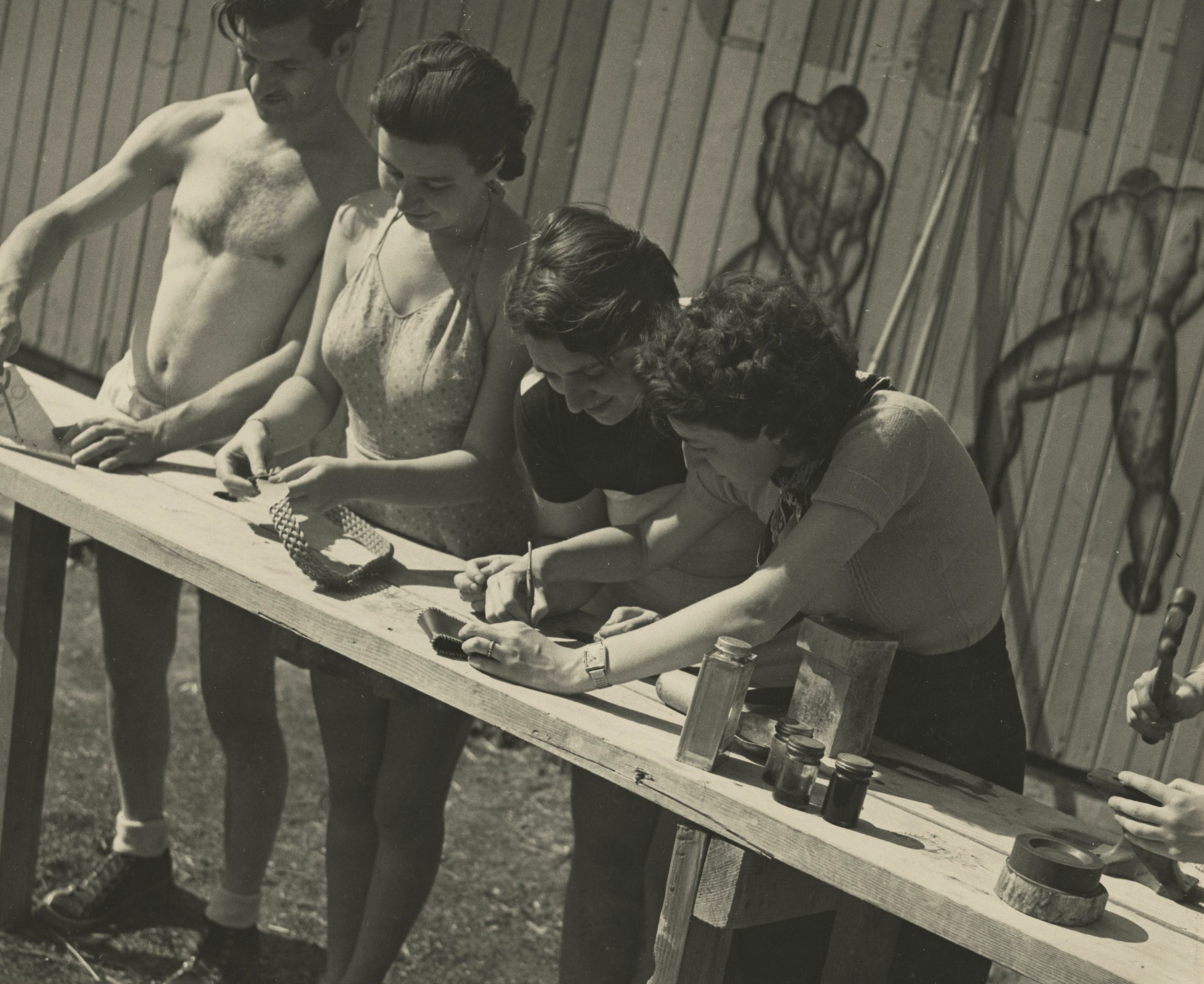
Untitled (craft work), c.1935
Eliot Elisofon
Eliot Elisofon (1911–1973) was born on the Lower East Side of New York City. In 1935, after attending Fordham University, Elisofon opened a commercial photography studio and made photographs for advertising and fashion. He joined the Photo League in 1936, eventually becoming its president. His New York street work was exhibited at the Pennsylvania Museum of Art and the Julien Levy Gallery.
In 1939 his series Playgrounds of Manhattan was exhibited at the New School; for Elisofon the series was a way to bring attention to playground conditions for children in poor neighborhoods. Elisofon befriended and photographed many artists of the period, including Chaim Gross, Isamu Noguchi and David Smith, and his studio across from Museum of Modern Art served as a gathering place for artists.
Elisofon’s first assignments for Life magazine appeared in 1937, Tin Type Photographer and Jewish New Year, and in 1941 his image of General Patton was the first color cover of Life. In 1942 Elisofon photographed a French Moroccan concentration camp, Sidi El Agachei but the images were never published. His other photographs of the North African Campaign during WWII became an exhibition titled The Tunisian Triumph, which opened in June of 1943 at MoMA and traveled to 20 cities in the United States.
Over the years, Elisofon travelled to six continents, covering an estimated 2,000,000 miles. His work appeared in Life for almost 30 years and 19 books of his work were published during his lifetime. He made 11 trips to Africa, photographing, making films and collecting art and donated his extensive collection of African art and his photographic archive of over 80,000 images to what became the National Museum of African Art in Washington, D.C. In 2013 the museum celebrated the 40th Anniversary of the Eliot Elisofon Photographic Archives and art collection with the exhibition Africa Re-Viewed: The Photographic Legacy of Eliot Elisofon.